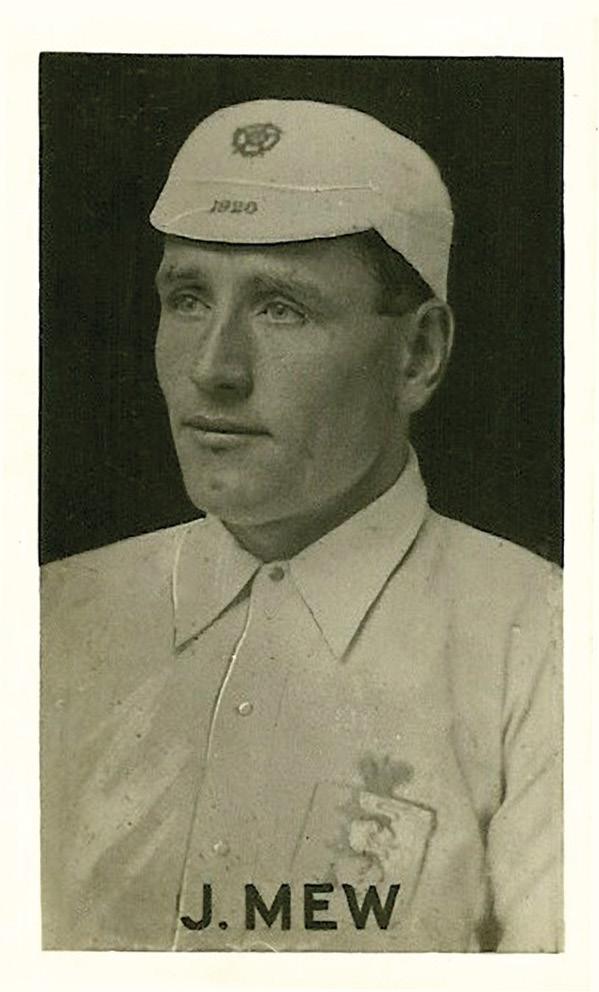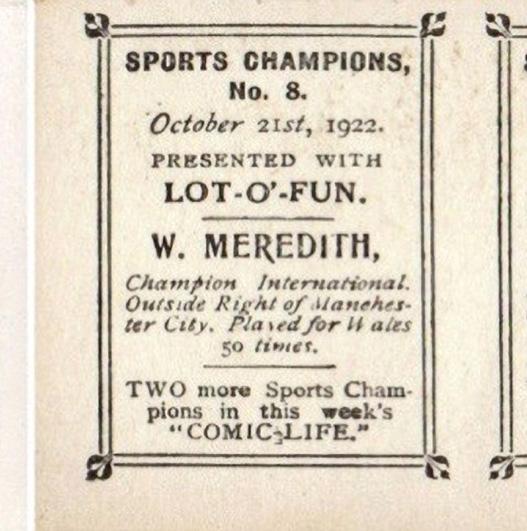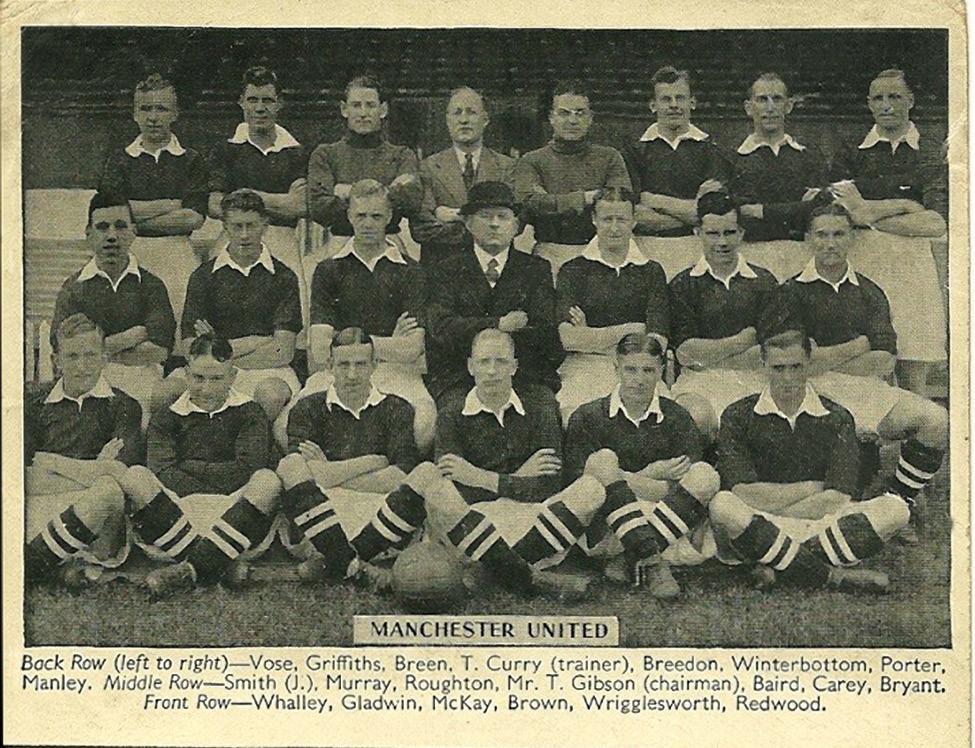
5 minute read
TAKE A CARD
by Iain McCartney Part 1
For many, there is much more to being a Manchester United supporter than simply attending games home and away, or if you are a far‑flung Red, following the progress of the team on television and via the internet. That interest lasts much more than the ninety minute match-day game time and can stretch into areas that are unknown to many, but then again, collecting United memorabilia is not to everyone’s taste.
Those who do collect tend to concentrate on programmes, but if you move towards pre-war cigarette and trade cards you can build up an excellent pictorial history of those players from yesterday. that is not exactly ‘United related’, all I will say is that blank cards were originally used in the paper cigarette packets as stiffeners, but were soon to carry advertisements, before turning to photographs of actors and actresses. in the late Victorian years. Various other themes were used with much success on the cards before sets of footballers first appeared with Cohen Weenan and Ogden amongst the first to do so. Their popularity soon prompted other companies to follow suit, with many of those early cards fetching large amounts today.



Their first cards were issued with the ‘Champion’ in 1922, in a set entitled - “Famous Football Captains & Famous Footballers”, with goalkeeper Jack Mew being included, looking rather refined in an England shirt and cap.
Through the following articles I intend to go through the world of United cards in an A-Z format which I hope you will find of interest. I should actually start with a brief history of the cigarette card, but to save space on something Instead of jumping in at the start of the cigarette card period, I will begin, as with the post- war Trade Card article with ‘A’ and work through the alphabet, so we will begin this series with the Amalgamated Press, who were founded in 1901 and issued a number of Boy’s publication over the course of the following years.

1922 also saw football cards issued with the ‘Lot-O’-Fun’ publication, under the heading ‘Sports Champions’ with Billy Meredith featured.
1926 saw another ‘Champion’ issue featuring a United player, with Frank Barson appearing in the ‘Footer Captains’ set.

While the Barson and Mew cards would cost you only pennies to purchase, ‘Triumph’ issued a ‘2nd Division Photo Album’ in 1925 containing a United team group, this would cost you around £40-£50.
Another team group, an actual card this time, appeared in 1938 with the ‘Champion’. These were black and white glossy plain back cards measuring approx. 10.5x8.5 cms., selling at around £7.
The ‘Champion Album of Famous Footballers’ would have been eagerly purchased in February 1930, with the individual photographs that appeared over the course of a few weeks stuck onto the relative pages.

Next up is the Ardath Tobacco ‘Lancashire Football Teams’ set of photocards from 1936, where amongst the likes of Butterworth, Earle, Horwich RMI and Old Mancunians, we find card number 80 showing the United team of the period. Ardath had actually issued an earlier set of fifty ‘Famous Footballers’ in 1934, but no United player was deemed as being worthy of a place.

Altogether, Ardath issued six sets of team photos, some 550 English clubs and 165 Scottish throughout 1936, as well a supplementary set of another eleven team groups and some individual player cards, with a ‘Lancashire Personalities’ set, also issued in 1937. But again there were no United players included, although in amongst various players from Manchester City, Liverpool and Everton were the likes of entertainers Gracie Fields and George Formby.

Not expensive to purchase, as a couple of pounds would get you the one above. Next up are the superb, and often very expensive Baines cards. These cards, usually shield shape, measured approximately between 8-9cms x 6-7cms and were issued by John Baines of Bradford between the mid 1880’s and 1920 and illustrated a wide variety of subjects.
The cards were sold in packets of six for 1/2d (less than 15p) and some twenty million cards were produced, with prizes given to people who collected as many as they could over a set period and also every 1000 th card produced was a ‘gold’ one and if you found one in your packet you won a prize of a football jersey, or even a musical box!! There was also an incentive to return the bags.
There is certainly no check-list of what was produced, so it is simply a case of what turns up. I think all the illustrations shown here a ‘Baines’ cards, as there were one or two other producers of similar items (which we will look at later in the series) and if anyone has any others not shown, I would be grateful for a scan.
All cards were coloured, not necessary in those of either Newton Heath or United, but they are certainly superb additions to any collection and needless to say expensive at certainly £50 plus.
One page, entitled ‘Lads of the North’ we find Joe Spence, while under the heading ‘Welsh Internationals’ is the lesser known Ray Bennion.
As a matter of interest, there was a Jimmy Murphy card issued with the ‘Pilot Album of Football Fame’.













